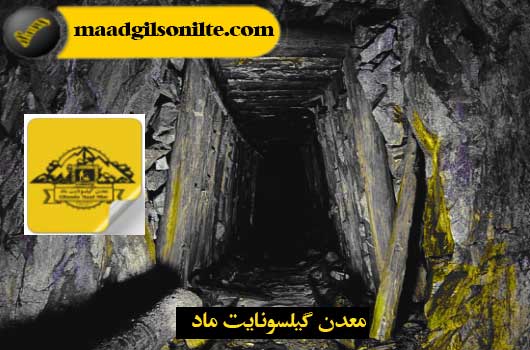
Mining has been an essential part of human civilization since ancient times. As technology has advanced, so too have mining techniques, but traditional mining methods persist today. One such method involves digging a mining tunnel by hand, using basic tools and manual labor. While this method may seem archaic, it is still used in many parts of the world where modern machinery may not be available or practical. This article will explore the process of digging a mining tunnel in the traditional way, discussing the tools and techniques used, the challenges and risks involved, and the cost and time implications of this method.
Traditional mining refers to the process of extracting natural resources such as minerals, metals, and precious stones from the earth using manual labor and hand tools. This technique has been used for centuries to access resources that lie deep beneath the surface of the earth.
The history of traditional mining can be traced back to ancient times when humans first discovered valuable resources beneath the earth’s surface. Initially, miners used basic tools such as shovels, axes, and pickaxes to extract minerals and metals. Over time, the process became more sophisticated, and mining techniques evolved to include the use of explosives, heavy machinery, and other advanced tools.
Digging a mining tunnel is an essential part of traditional mining techniques. It allows miners to access resources that are deep beneath the surface of the earth. Tunnels also provide a way for miners to transport materials in and out of the mine safely. The construction of mining tunnels requires careful planning and execution as it can impact the stability of the surrounding rocks and soil.
Mining tunnels are used for a variety of purposes such as ventilation, drainage, and transport. They also provide access to different mining levels and allow for the installation of support structures such as beams and pillars. Mining tunnels are an essential component of underground mining and are necessary for the extraction of valuable resources.
Traditional mining requires a variety of tools such as shovels, pickaxes, and hammers. Other essential tools include chisels, drills, and wheelbarrows. These tools are used to break up rocks and soil and extract valuable resources from the earth.
The mining industry has seen significant advancements in traditional mining tools over the years. Modern pickaxes, for example, are made with stronger materials and are designed to last longer than their traditional counterparts. Other advancements include the use of power tools and machinery to increase efficiency and reduce the physical strain of manual labor.
The process of digging a mining tunnel begins with surveying the area to determine the best location for the tunnel. Once the location is determined, miners use drills to make holes in the rock and insert explosives. The explosives are then detonated to break up the rock, and the debris is removed using shovels and wheelbarrows. This process is repeated until the tunnel is complete.
Effective mining tunnel digging requires careful planning and execution. It’s essential to ensure the stability of the surrounding rocks and soil, as any disturbances can cause cave-ins and other safety hazards. Regular inspections of the tunnel are also necessary to identify potential issues before they become too severe. Proper training and safety equipment are also essential for minimizing the risk of accidents and injuries.
Mining has been an essential part of human civilization for centuries. However, traditional mining techniques come with a lot of challenges and risks. In this section, we will discuss two main areas of concern that traditional miners face.
Traditional mining methods often involve digging deep into the ground to extract minerals, which means that significant environmental risks and concerns are involved in the process. For example, mining can lead to soil erosion, habitat destruction, pollution of natural resources, and the release of toxic chemicals that can harm ecosystems.
Traditional mining is physically demanding and can be dangerous for workers. Miners often have to work in cramped and poorly ventilated space
s, which can lead to respiratory illnesses. Additionally, there is the risk of cave-ins, explosions, and exposure to hazardous chemicals.
Despite the risks, traditional mining is still practiced in many parts of the world. To minimize hazards and risks, miners must take appropriate safety precautions and adhere to health and safety regulations. Here are two critical areas that miners must consider.
Personal protective equipment (PPE) such as hard hats, gloves, and safety goggles, is essential for miners. Other necessary PPE includes respirators or masks to protect against dust and pollutants.
Mining companies must follow specific health and safety regulations to prevent accidents, injuries, and illnesses. These regulations include regular safety inspections, the use of proper equipment, and training for workers on how to identify and avoid hazards.
Despite the challenges and risks involved, traditional mining techniques are still used today. However, they often require more time and resources to complete than modern mining techniques.
Modern mining techniques, such as open-pit mining and hydraulic mining, can extract minerals more quickly and efficiently than traditional methods. These techniques also have reduced environmental impacts.
Traditional mining techniques, on the other hand, require a lot of manpower, time, and resources. However, they are often the only viable option in many parts of the world. Additionally, traditional mining techniques provide jobs for millions of people worldwide and are an essential part of many local economies.
Traditional mining is an essential part of human history and still plays a significant role in many economies worldwide. Despite the challenges and risks involved, miners continue to practice traditional techniques to extract minerals from the earth.
Traditional mining techniques are significant because they provide jobs and support local economies. Additionally, they allow us to extract important minerals and resources from the earth and have been an essential part of human civilization for centuries.
As the world changes, traditional mining techniques may be adapted to become more sustainable and efficient. It is essential to find ways to minimize the environmental risks and safety concerns associated with traditional mining while still supporting local economies and providing essential minerals and resources.In conclusion, traditional mining techniques such as digging a mining tunnel by hand continue to be used today despite the availability of modern technology. While there are risks and challenges involved, the importance of mining tunnels cannot be overstated. As we move into the future, it will be interesting to see how traditional mining methods evolve and adapt to meet the needs of a changing world.
Traditional mining techniques involve labor-intensive methods such as digging a mining tunnel by hand using basic tools. Modern mining techniques, on the other hand, use advanced machinery and technology to extract minerals from the earth more efficiently and quickly.
Traditional mining can be physically demanding and dangerous work, with risks such as cave-ins, respiratory issues from dust exposure, and exposure to hazardous chemicals. It can also be time-consuming and expensive compared to modern mining techniques.
In many parts of the world, modern machinery and technology may not be readily available or practical. Traditional mining methods can also be more sustainable and environmentally friendly than modern techniques that use heavy machinery and chemicals.
As technology continues to evolve, it is likely that traditional mining methods will continue to be adapted and improved. There is also a growing interest in sustainable and environmentally conscious mining practices, which may lead to a resurgence in traditional mining techniques.

